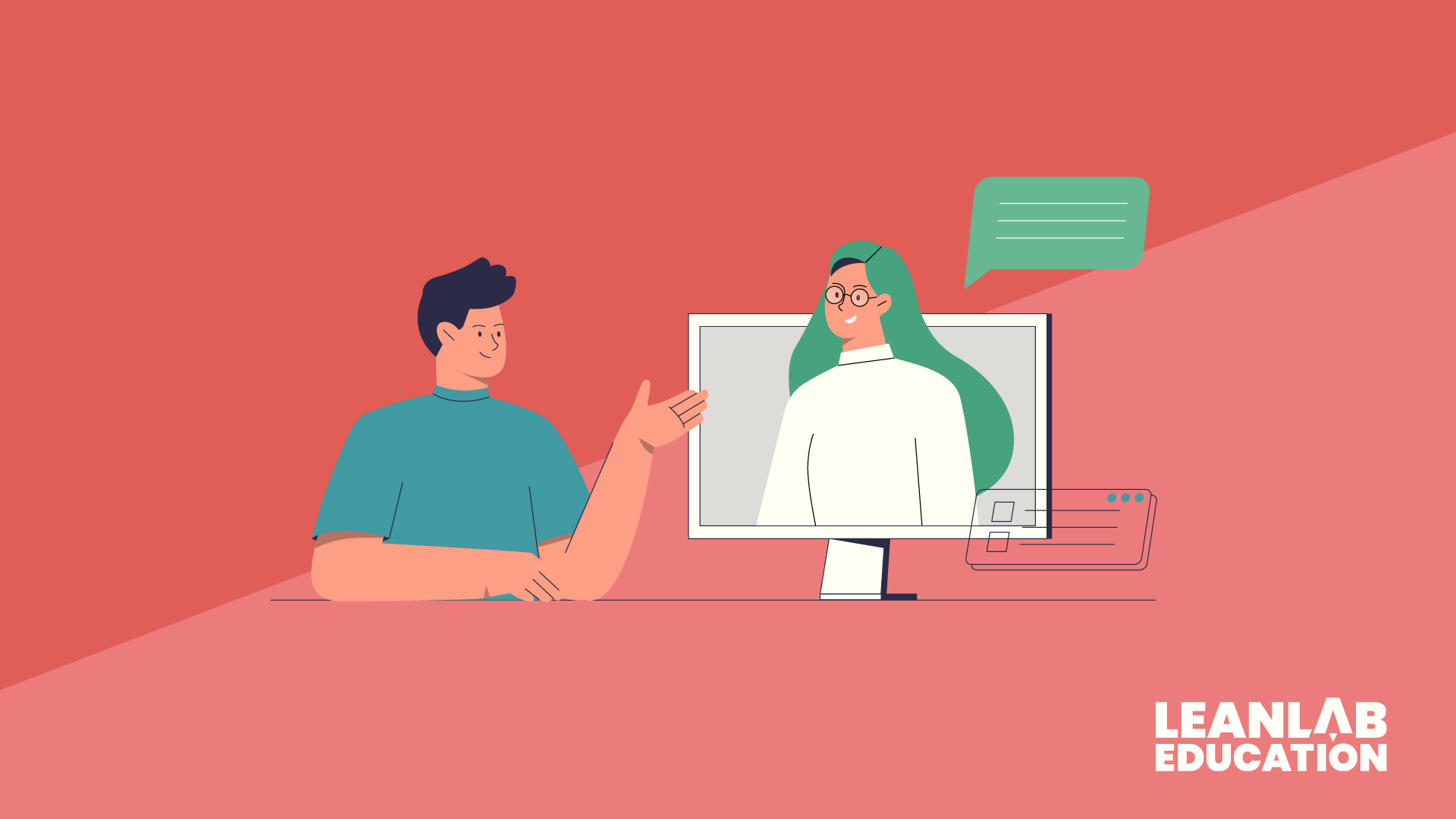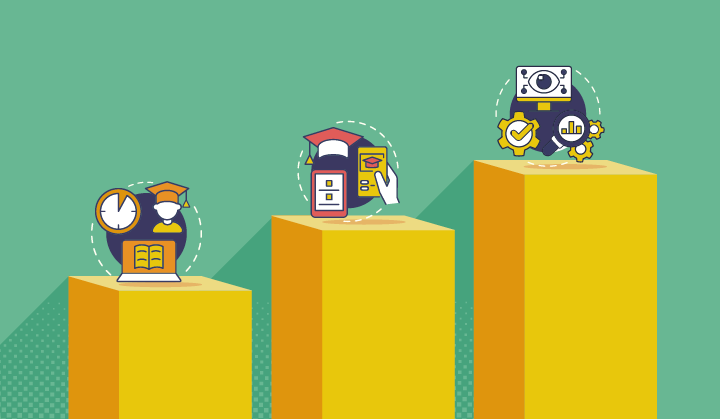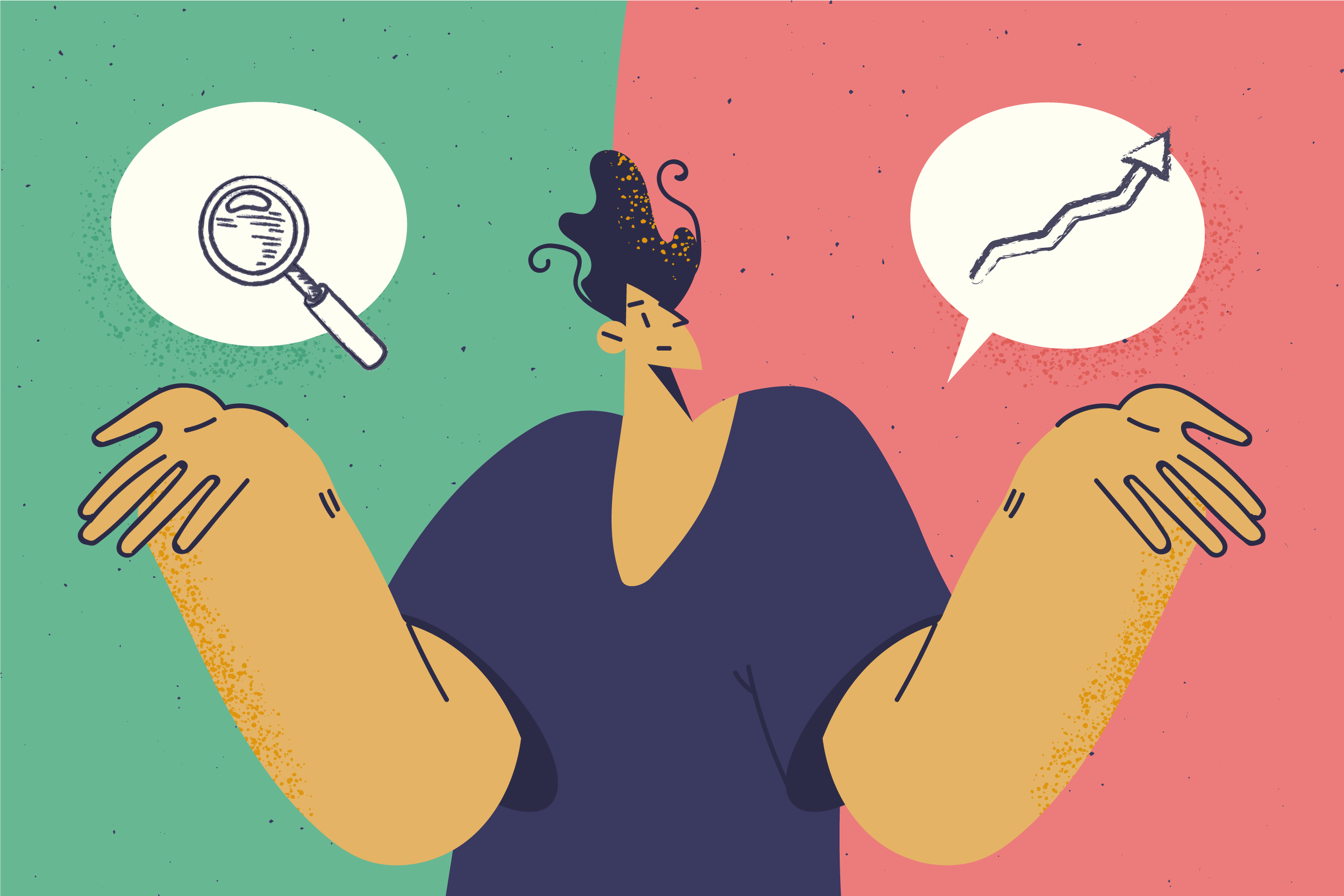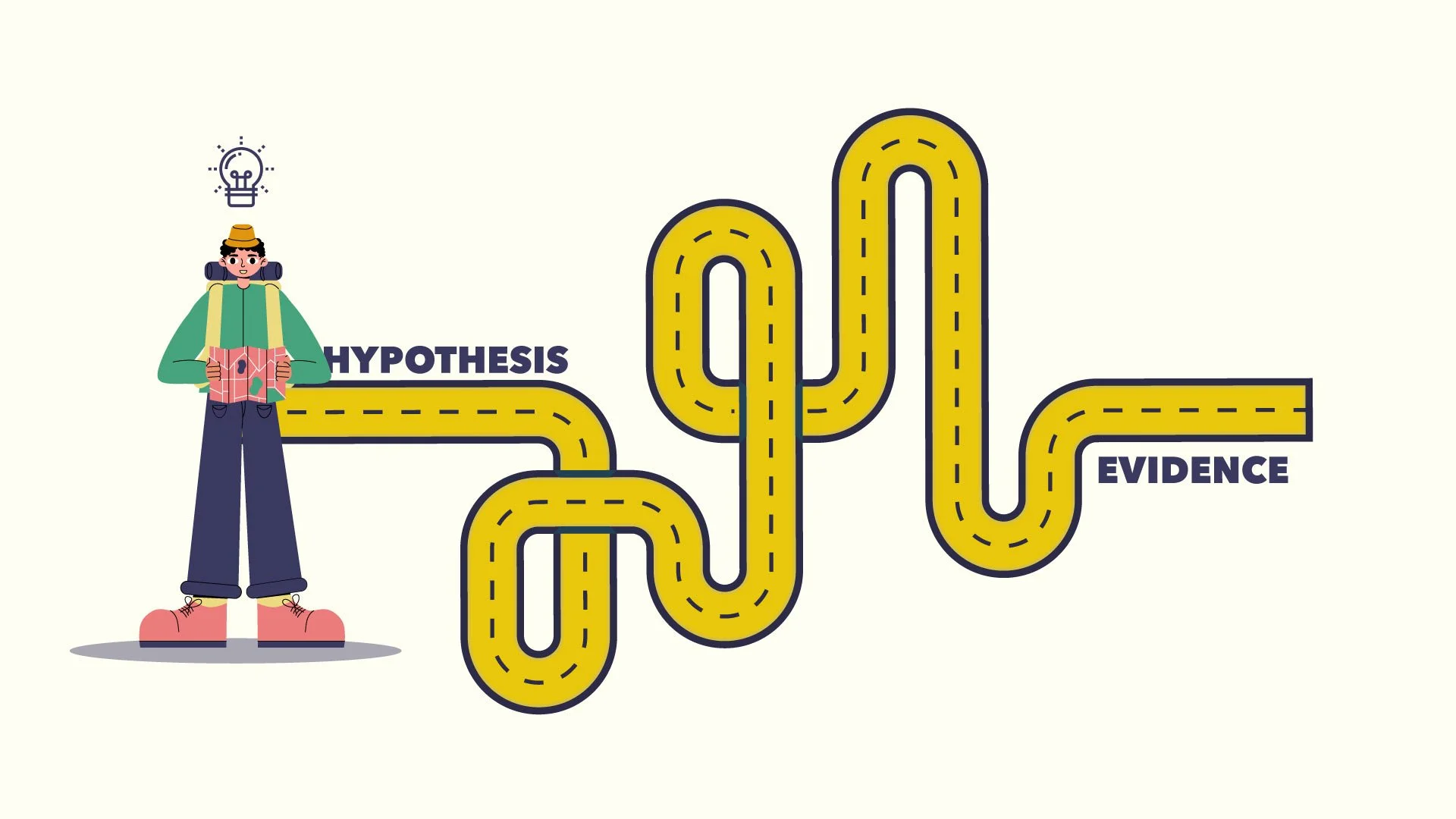We’ve transcribed, and edited for clarity, our April 2021 Pilot Research Program panel discussion. Russ Altenburg joins LEANLAB’s Katie Boody and Jorge Holguin for a deep dive into the reconfigured program, which is designed to support school communities as they trial education innovations.
Russ Altenburg Hey, everybody, I am stoked to welcome my friend Katie Boody Adorno, the Founder and CEO of LEANLAB Education and Jorge Holguin, the Manager of School District Partnerships. I have known Katie for about five years now. It has been so awesome to see her steer what was just an idea when we first met into something real and innovative and pushing innovation across the K-12 sector in really interesting ways. Before we get more to the heart of it, I do want to share with Katie the thing that I find most fascinating about what you've built. You're advancing innovation through the lens of research in this time where everyone is adopting edtech tools and thinking about hybrid learning and about better ways to reach kids and support teachers.
You have created a matching program to the Pilot Research Program that creates a dual benefit. On the one hand, you have public school districts and schools and on the other hand, you have tech companies that are trying to innovate. You have innovative schools that are constantly looking for the best tools to support their school communities. And you're looking for companies that are looking for safe spaces to get real feedback on their products and services so that they can serve, and ultimately improve, the lives of more students across the country. And so I’m really fascinated with this approach. And appreciate you guys taking the time to share a little bit more about it.
“Katie, I just wanted you to share a bit more about what the Pilot Research Program is all about.”
Katie Boody As you said, Russ, functionally, what LEANLAB does is pair high potential edtech companies with real life classrooms. Together they can inform how new education technology or innovations evolve to the benefit of students. I'm a former educator myself, and we realized that as a former educator, there was no safe space to try new things and to innovate. And also in a rigorous fashion that had data, and formed insights underneath it that brought best practices from their research field to education innovation.
So in our Pilot Research Program, what we do on a really basic level is we look for school districts or schools that are wanting to try new things, that see this moment in time as a huge opportunity to change the way education is done and to leverage education at technology to propel student outcomes. So we find those school communities and we say, hey, what are the challenges you have that you want to innovate on? They tell us what those are and that sends us to work, going to find education technology that meets their needs. What's really cool, though, about our program is that really core to our DNA is that this belief and community was based on what we call Co-Design. Breakthroughs in education actually won't happen unless we really are listening to parents, students, and teachers - those that are most impacted by the solution - and we research and evolve these technology products. So what that means concretely is we give to schools this professional learning community.
These teachers and administrators have the chance to learn from each other, learn how other schools are innovating and be together as they innovate themselves, with grant funding. We give them about ten thousand dollars of unrestricted funds to participate in this process and in studies like teacher empowerment. We hope that as teachers and even sometimes parents and students are giving their ongoing feedback to an education technology tool, that they begin seeing how their insights actually lead to real change in the property itself and ultimately the adoption in the school district. And ideally they feel empowered by that process, that their feedback matters. And then finally, procurement starts.
We hope that through the data that we're gleaning from how the education technology works and the natural school environment, that we're able to capture that in our research reports and able to hand that back over to an administrator and say this is how this pilot experience actually works and you can make an informed decision if you want to scale it up to your whole system or not. But like I said, I think the real secret sauce here is that community voice. There's no place in the country where you can try a new education innovation, in its natural environment of a school, and get that real feedback from the teachers and students and use that to keep improving. And really that voice is what's special about what we do here.
“So what does co-design look like in this context?”
Jorge Holguin As Katie mentioned, our goal with this process is to continue to look for those innovative schools, but also we’re here to support and listen. With that in mind, we call the process a “listening tour”, which is an opportunity to bring in from the early stage conversations those representatives of parents, teachers, administrators to the table, placing them all together in a way that we can have a conversation about the pain points. What we mean by that is the different challenges that are happening within the schools, and step back and figure out what opportunities might be out there with it, whether there’s an education technology solution that might be able to address it. And we do that through a series of interviews, a series of dialogs. What can be improved in the edtech space, but also what can continue to improve outside of that? So for, for example, one our alumni, Kirsten Brown, who is a principal at Crossroads High School. She went through this process with her team and after stepping outside of this program, successfully completing it, she realized the value assets of co-designing. As we know with Covid, there has been a lot of uncertainty. So there has been an opportunity for her to apply this with our team making sure that she's involving parents as well as partners and able to make sure that we're making the best decision for our students.
“What's the value proposition for edtech entrepreneurs to be a part of this program?”
Katie Boody Education technology entrepreneurs have the problem of - and I think most district administrators can relate to this too - trying to get into a system, especially if they're at an earlier stage. If they're a “no name brand” in education and they just want a shot to see, does our product really move the needle for children? But they want to do that in an ethical way and they want to do that in a way that can be fairly evaluated. So I think that's what we bring to the table, is that we can, for the edtech entrepreneur, get them into a real school environment and provide them that much craved feedback and insight into if their product is working as intended. And the opportunity to keep evolving it so that it can get to their aspiration - and then for the administrator and the school system, we can kind of be that trusted vetter. We can say we're not going to let something in unless it meets a certain threshold of standards. And you can trust that we're bringing only things to you that meet your actual needs, that aren't arbitrary or extra, because Jorge and his team are able to do that deep community work.
“What's the duration of this project overall? Are we talking weeks, are we talking a full school year? Somewhere in between?”
Jorge Holguin Typically a Pilot Research Program would last a semester, but we are looking into ways for opportunities to engage in shorter periods of time, whether that is trying something small. And I think the benefit for that is both for our entrepreneurs and our school partners, because it gives them an opportunity to try something directly without that long term commitment, but still looking for ways to innovate within the school.
“How do the different types of research affect the duration?”
Katie Boody We have several different types of research we’re specializing in, but one where we're looking for quick, efficient study is - we call these feasibility studies, which will take less than a semester, maybe a couple of months. We're looking for teachers to give feedback on the product functionality. And so the longer term studies that Jorge is referring to, that’s our semester long implementation or efficacy studies, where we really want to get under the hood and measure - is this product making an impact on student achievement or student outcomes as we define them? So those are longer and a little more rigorous.
“What are some examples of schools that have been through this program?”
Jorge Holguin Yeah, I can definitely start, especially during Covid. Some of the main pain points that came out were parent engagement and then social emotional learning, as we can only imagine. Right. What we're all experiencing. Yeah, well, just just being able to take that in for a moment, what we've been able to do. And just to give you a little bit more background, I think something that is unique to us as well is that we work with all different types of districts. And this last cohort then highlights that, for example, in parent engagement. We were working with Clinton County, which is a rural school district here in Missouri, and we're also working with Kansas City, Kansas City, Missouri, public school districts and a few of the charter schools as well. So it gives you that dynamic there directly of who we're working with and how we know that all students need support.
With Clinton, the need was again around parent engagement. And we, after vetting a few entrepreneurs and meeting with the core design group of the representatives of the school, narrowed down to working with a company that's called Sown to Grow. It's an opportunity for a platform where the teachers can continue to communicate and also leverage those resources. So I'm happy to share those apps here in the link shortly so you can learn a little bit more. But I wanted to talk as well with the Kansas and Missouri Public School District. We're actually working with two schools there in the district. And the company that we're working with, it's called Class Prep, so that it's a tool that is helping students with social emotional learning. And it provides a platform where students can take the initiative and recognize what they're doing well and what they need to improve in a way that 's progressive and creates that opportunity for them to see not only how they're doing, but how their classes do it, and how they can get rewarded for that. So it has those core traits.
“Have educators been reluctant to sign up for the program because of initiative fatigue related to the pandemic and remote learning?”
Katie Boody We worked very closely with a lot of school districts and covered their technology recovery work and tried to make sure all their students had Internet access and just basic machines, let alone education tools to be successful with distance learning. But what we found, actually, is that many of our school districts, once they got through that kind of initial shock of moving to distance learning, were able to zoom out and say, wow, this is an incredible opportunity to really try to do things differently, to move our industry into the 21st century and to start building new platforms and new ways to better serve our students and to realize we can get out of a one size fits all model and really start dreaming of new tools, new environments, new ways to get our all of our students what they need. So shockingly, we've heard from several large school districts. Is that as a resounding yes, this is the time to try new things. That doesn't mean try them irresponsibly. That means in a way to double down on the research, double down on how we're gaining in science and evidence based ways, and also at the same time double down on our commitment to equity and inclusion and make sure that we're surfacing voices from parent, student, and teacher communities in a way that really is driving this change.
Jorge Holguin From the perspective of the teachers and administrators and even parents, this has been a great channel to echo some other challenges. So putting a wish list together of all this. Amazing. Right now, rather than looking at like, oh, we're we have all of these challenges and we don't know how to move forward - look at it like here's our priority. This is where we want to focus. And this is kind of where our teachers are also echoing in our parents. So how can we move together toward that and be able to create that communication and that space to have those conversations, while amplifying the voices of those that normally wouldn't be representatives and decision makers?
Katie Boody A perfect point where what we're able to find is that really magic point where everyone is in the line to the same kind of theater and site. And we think that could be their propulsion to innovation and these big systems.
“What kind of school districts would be a good fit for the program?”
Katie Boody We at this point in time we’re based in Kansas City, Missouri, but we're working with school districts all over, so what really comes first is that mindset and that commitment to want to try something new and wanting to do so in a community oriented and inclusive way. First and foremost, those are what we're looking for from school districts large and small.
Russ Altenburg So open to anyone, for the most part, as long as the mindset is aligned.
Katie Boody Yes.
Russ Altenburg And then returning back to the tech side of things, I've crossed paths with several tech entrepreneurs and startup companies, and I think all of them sort of want that Holy Grail, like they want that like gold, platinum level research, random, random-controlled that shows that they're randomized controlled trials, that show that their product works, their service works, and that they can use that to like sell it to districts all over.
“What type of research do you recommend for the companies in the program?”
Katie Boody Yeah, I mean, that is something we often hear, and I think it's two pronged. It's once there's an acknowledgment. I think we've seen this is a great analogy here with the vaccine trials for covid that the traditional long term, multi-year way to demonstrate efficacy or impact of a tool no longer fits a 21st century context, particularly under a time like now where we can't afford to wait. So under that context, we have to get more creative and more efficient with the way we measure how solutions are benefiting children in the learning environment. And so I think what thing that we're trying to guide companies to is that's actually good news for an early stage company, because that means that there are more efficient studies that they can do to demonstrate that and act.
We really think that that's one way that we can do semester-long studies, where we can do experimental studies. We can get robust data sets once we have data share agreements with school systems and get under the hood and look at how all these things are relating to each other to the end of measuring student impact. But we also believe that because of our co-design process, we're giving entrepreneurs more at bats faster where they instead of waiting for three years only realize that the effect was nil or that they didn't have a chance to make something a better experience for the students. We can get those insights into almost real time so that they can improve a lot and move toward the intended impact faster, which really is the goal here is to improve student experiences and prove their learning outcomes versus waiting for a more rigid study structure to be complete. So that's the goal. And then with the usability studies, our hope is that we can intervene faster. We can give these entrepreneurs an insight into just how to make their product easier to use or more fun to use for students and teachers.
Russ Altenburg Well, I want to take your time, just taking the time to share a little bit more about the work you're doing here. How can folks learn more about this?
Jorge Holguin If you're willing just to try it out and just have the conversation, that's kind of where we want to start and meet you, where you are in progress at your own pace rather than going through a fast process as well. So thank you again, Russ, for having us today.















